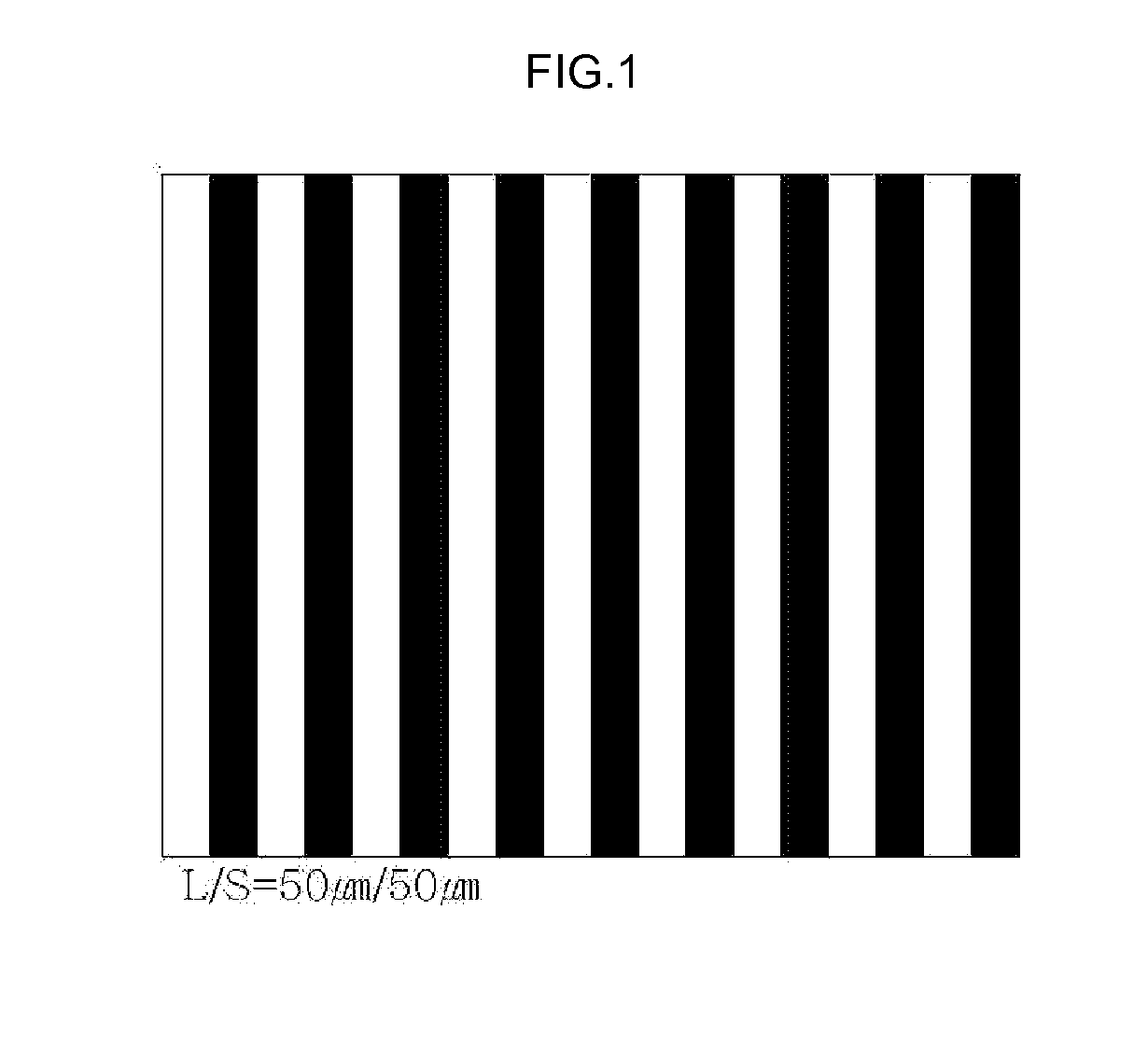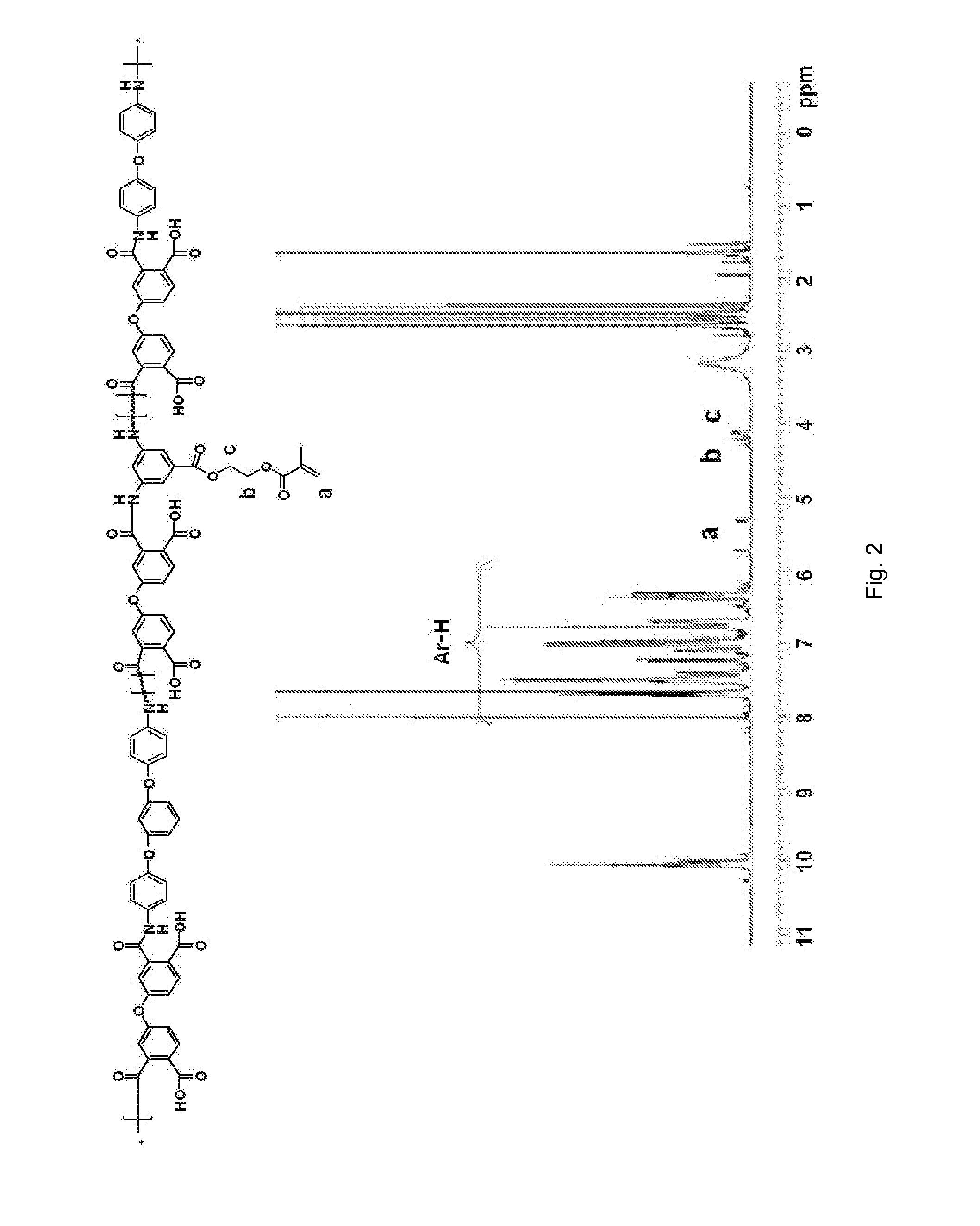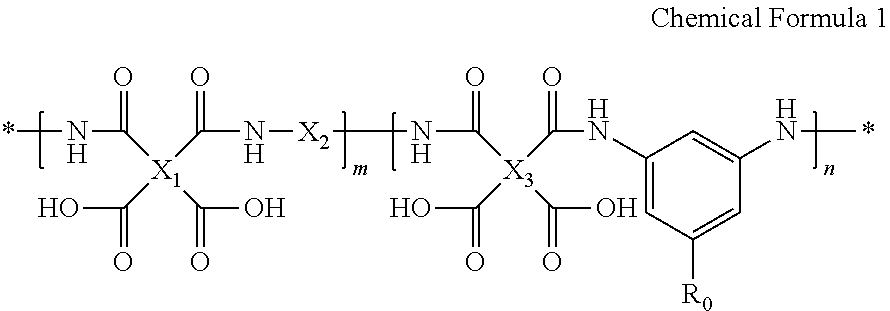Polyamic acid, polyimide, photosensitive resin composition comprising the same, and dry film manufactured from the same
a technology of polyimide and polyamic acid, which is applied in the direction of photosensitive materials, instruments, photomechanical equipment, etc., can solve the problems of poor flame retardancy of resin composition, discoloration of resin during soldering, and poor flexibility of resin composition, etc., to achieve excellent flexibility, excellent developing property, and high resolution
- Summary
- Abstract
- Description
- Claims
- Application Information
AI Technical Summary
Benefits of technology
Problems solved by technology
Method used
Image
Examples
example 1
Preparation of Polyamic Acid and Photosensitive Resin Composition
[0094]While letting nitrogen flow into a four-neck round bottom flask installed with a thermometer, an agitator, a nitrogen input port and a powder dispensing funnel, 190 g of N,N-dimethyl acetamide (DMAc) was added to 7.94 g of 4,4′-oxydianiline (4,4′-ODA), 27.02 g of 1,3-bis-(4-aminophenoxy)benzene (TPE-R)), and 3.82 g of 2′-(methacryloyloxy)ethyl 3,5-diaminobenzoate in the four-neck round bottom flask, and dissolve them completely by agitating. The solution was cooled to 15° C. or lower, and 18 g of 4,4′-oxydiphthalic anhydride (ODPA) was slowly added. The solution was agitated at 5° C. for 25 hours to obtain a polyamic acid varnish.
[0095]The viscosity of the produced polyamic acid was 3200 cps. After the product polymer was obtained by precipitation, it was confirmed by NMR analysis that 2′-(methacryloyloxy)ethyl 3,5-diaminobenzoate was inserted into polyamic acid. The NMR graph is shown in FIG. 2.
[0096]To 100 g of...
experimental example
Evaluation of Film Physicochemical Properties
[0098]The photosensitive resin compositions obtained in Examples 1 to 5 and Comparative Example 1 were coated on a polyethyleneterephthalate (PET) film using a doctor blade in a thickness of 71 μm, and dried in oven at 80° C. for 15 minutes to obtain dry films with a thickness of 25 μm.
experimental example 1
Transparency
[0099]The transparency of the dry films was observed by the naked eye, and the results are shown in Table 2.
PUM
| Property | Measurement | Unit |
|---|---|---|
| temperature | aaaaa | aaaaa |
| ring structure | aaaaa | aaaaa |
| photosensitive | aaaaa | aaaaa |
Abstract
Description
Claims
Application Information
 Login to View More
Login to View More - R&D
- Intellectual Property
- Life Sciences
- Materials
- Tech Scout
- Unparalleled Data Quality
- Higher Quality Content
- 60% Fewer Hallucinations
Browse by: Latest US Patents, China's latest patents, Technical Efficacy Thesaurus, Application Domain, Technology Topic, Popular Technical Reports.
© 2025 PatSnap. All rights reserved.Legal|Privacy policy|Modern Slavery Act Transparency Statement|Sitemap|About US| Contact US: help@patsnap.com



